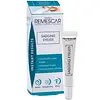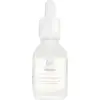What's inside
What's inside
 Benefits
Benefits

 Ingredients Side-by-side
Ingredients Side-by-side

Water
Skin ConditioningGlycerin
HumectantLithium Magnesium Sodium Silicate
AbsorbentSodium Silicate
BufferingAcrylates Copolymer
Meadowfoam Estolide
Skin ConditioningPhenoxyethanol
PreservativeAlbizia Julibrissin Bark Extract
MaskingMaris Aqua
HumectantPEG-75 Shea Butter Glycerides
EmulsifyingXanthan Gum
EmulsifyingEthylhexylglycerin
Skin ConditioningVp/Polycarbamyl Polyglycol Ester
Hydrolyzed Sesame Protein Pg-Propyl Methylsilanediol
Skin ConditioningHydrolyzed Algin
Sucrose
HumectantSodium Benzoate
MaskingDarutoside
Skin ConditioningCI 16035
Cosmetic ColorantCI 19140
Cosmetic ColorantWater, Glycerin, Lithium Magnesium Sodium Silicate, Sodium Silicate, Acrylates Copolymer, Meadowfoam Estolide, Phenoxyethanol, Albizia Julibrissin Bark Extract, Maris Aqua, PEG-75 Shea Butter Glycerides, Xanthan Gum, Ethylhexylglycerin, Vp/Polycarbamyl Polyglycol Ester, Hydrolyzed Sesame Protein Pg-Propyl Methylsilanediol, Hydrolyzed Algin, Sucrose, Sodium Benzoate, Darutoside, CI 16035, CI 19140
Water
Skin ConditioningGlycerin
HumectantButylene Glycol
HumectantSorbitol
HumectantBetaine
HumectantAloe Barbadensis Leaf Juice
Skin ConditioningPhenoxyethanol
PreservativeXanthan Gum
EmulsifyingPanthenol
Skin ConditioningCaffeine
Skin ConditioningEthylhexylglycerin
Skin ConditioningEscin
TonicMalva Officinalis Flower Extract
Skin ConditioningBiosaccharide Gum-1
HumectantSodium Citrate
BufferingIngredients Explained
These ingredients are found in both products.
Ingredients higher up in an ingredient list are typically present in a larger amount.
Ethylhexylglycerin (we can't pronounce this either) is commonly used as a preservative and skin softener. It is derived from glyceryl.
You might see Ethylhexylglycerin often paired with other preservatives such as phenoxyethanol. Ethylhexylglycerin has been found to increase the effectiveness of these other preservatives.
Glycerin is already naturally found in your skin. It helps moisturize and protect your skin.
A study from 2016 found glycerin to be more effective as a humectant than AHAs and hyaluronic acid.
As a humectant, it helps the skin stay hydrated by pulling moisture to your skin. The low molecular weight of glycerin allows it to pull moisture into the deeper layers of your skin.
Hydrated skin improves your skin barrier; Your skin barrier helps protect against irritants and bacteria.
Glycerin has also been found to have antimicrobial and antiviral properties. Due to these properties, glycerin is often used in wound and burn treatments.
In cosmetics, glycerin is usually derived from plants such as soybean or palm. However, it can also be sourced from animals, such as tallow or animal fat.
This ingredient is organic, colorless, odorless, and non-toxic.
Glycerin is the name for this ingredient in American English. British English uses Glycerol/Glycerine.
Learn more about GlycerinPhenoxyethanol is a preservative that has germicide, antimicrobial, and aromatic properties. Studies show that phenoxyethanol can prevent microbial growth. By itself, it has a scent that is similar to that of a rose.
It's often used in formulations along with Caprylyl Glycol to preserve the shelf life of products.
Water. It's the most common cosmetic ingredient of all. You'll usually see it at the top of ingredient lists, meaning that it makes up the largest part of the product.
So why is it so popular? Water most often acts as a solvent - this means that it helps dissolve other ingredients into the formulation.
You'll also recognize water as that liquid we all need to stay alive. If you see this, drink a glass of water. Stay hydrated!
Learn more about WaterXanthan gum is used as a stabilizer and thickener within cosmetic products. It helps give products a sticky, thick feeling - preventing them from being too runny.
On the technical side of things, xanthan gum is a polysaccharide - a combination consisting of multiple sugar molecules bonded together.
Xanthan gum is a pretty common and great ingredient. It is a natural, non-toxic, non-irritating ingredient that is also commonly used in food products.
Learn more about Xanthan Gum